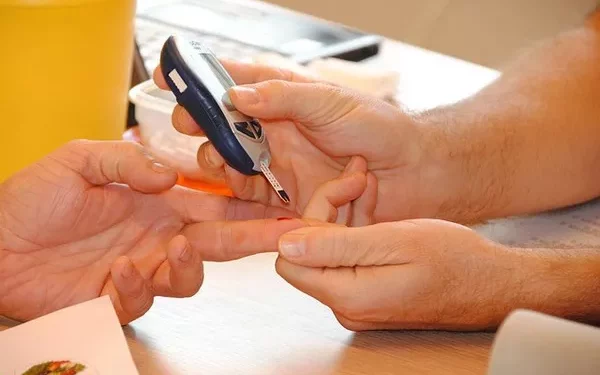Monitoring blood glucose levels is crucial for individuals with diabetes. Traditionally, checking blood sugar has been synonymous with the use of finger-prick devices, which can be uncomfortable, inconvenient, and in some cases, demotivating for people who need to monitor their blood sugar frequently. However, with advancements in medical technology, there are now several non-invasive methods available for monitoring blood glucose levels without the need for regular finger pricks.
This article explores the various alternatives to finger-prick blood sugar testing, examining their mechanisms, accuracy, and practicality. By understanding these non-invasive methods, patients and healthcare providers can make informed decisions about managing diabetes more effectively while reducing the discomfort and inconvenience traditionally associated with blood sugar monitoring.
The Need for Regular Blood Sugar Monitoring
Diabetes is a chronic condition that affects the body’s ability to regulate blood glucose levels. Blood glucose (or blood sugar) refers to the amount of sugar present in the bloodstream, which is primarily derived from the food we eat. Insulin, a hormone produced by the pancreas, helps regulate blood sugar by facilitating its absorption into cells for energy production. In people with diabetes, the body either doesn’t produce enough insulin or doesn’t respond to it effectively, leading to high or fluctuating blood sugar levels.
Effective management of blood sugar levels is essential to prevent both short-term and long-term complications, including diabetic ketoacidosis (DKA), nerve damage (neuropathy), kidney disease (nephropathy), vision problems (retinopathy), and cardiovascular diseases. Regular monitoring of blood glucose levels is a critical component of diabetes management. However, the traditional method of finger-pricking to draw blood for testing can be uncomfortable and challenging for many patients, particularly those who require frequent testing.
Challenges of Traditional Finger-Pricking
The finger-prick method, which involves using a lancet device to draw a small blood sample for glucose testing, is widely used but has several inherent challenges:
Pain and Discomfort: Finger-pricking can cause pain, particularly when used frequently. Over time, this discomfort may discourage patients from performing regular glucose checks.
Inconvenience: Testing requires access to blood glucose meters, test strips, lancets, and other supplies. This process can be cumbersome, particularly when people are on the go or unable to manage the logistics of carrying these tools.
Hygiene and Accuracy Issues: Finger-pricking requires a clean lancet and a proper technique to avoid contamination and inaccuracies. The use of the same finger repeatedly can lead to calluses, making it harder to draw blood effectively and increasing the risk of infection.
Psychological Effects: The discomfort associated with regular testing can lead to “test avoidance” behaviors, which may negatively impact diabetes management and overall health outcomes.
Given these challenges, it is no surprise that individuals with diabetes have sought alternative, non-invasive methods of monitoring their blood glucose levels. Fortunately, advances in technology have provided several alternatives that promise a less intrusive approach to monitoring glucose levels.
Non-Invasive Blood Sugar Monitoring Methods
The development of non-invasive blood glucose monitoring methods aims to eliminate the need for painful finger pricks, offering more convenient and comfortable solutions. Several non-invasive technologies have been researched and are in various stages of development and commercial use. Below are the primary non-invasive methods available today.
Continuous Glucose Monitoring (CGM) Systems
Continuous glucose monitoring (CGM) is one of the most advanced methods available for non-invasive blood glucose monitoring. Although CGMs still involve a small sensor inserted under the skin, they eliminate the need for frequent finger-pricks, providing continuous, real-time glucose readings.
How it Works: CGMs use a small, flexible sensor that is inserted just under the skin, typically on the abdomen or the arm. The sensor measures glucose levels in the interstitial fluid (the fluid between cells) rather than directly in the blood. These systems use a small electrode to measure the glucose concentration in the interstitial fluid and send the data to a receiver or smartphone app in real-time. Most CGMs also allow users to set alerts for when their glucose levels go too high or too low.
Pros:
Continuous Monitoring: CGMs provide real-time glucose readings 24/7, allowing users to track their blood sugar trends and make adjustments in real-time.
Reduced Finger Pricks: While initial calibration may require occasional finger pricks, CGMs significantly reduce the need for multiple daily pricks.
Better Data for Management: CGMs offer more detailed information about blood sugar trends, helping users and healthcare providers make better decisions about insulin doses, diet, and exercise.
Cons:
Cost: CGMs can be expensive, with many insurance plans covering only part of the cost. The sensors typically need to be replaced every 7 to 14 days, adding to the overall cost.
Invasive: Although less invasive than finger-pricking, CGMs still require a sensor insertion under the skin, which may cause discomfort for some users.
Accuracy Limitations: While CGMs provide valuable insights, they are still less accurate than traditional blood glucose meters in certain situations, especially when blood sugar levels are changing rapidly.
Popular CGM Brands:
- Dexcom G6 and G7
- Abbott FreeStyle Libre
- Medtronic Guardian Connect
Non-Invasive Glucose Monitors Using Infrared Light
Infrared (IR) light-based glucose monitoring is a promising non-invasive technology that uses the principle of light absorption to detect blood glucose levels. These devices work by emitting infrared light into the skin, where it interacts with glucose molecules in the blood. The way that glucose absorbs infrared light is unique, and this interaction can be used to estimate glucose concentrations in the body.
How it Works: The device typically uses a sensor that emits infrared light onto the skin, and detectors measure the amount of light that is reflected back. Since glucose molecules absorb infrared light differently than other molecules, the device can calculate glucose levels based on the absorbed light and provide an estimate of blood sugar levels.
Pros:
Non-Invasive: This method does not require any physical penetration of the skin or the use of needles, making it completely non-invasive.
No Need for Calibration: Unlike CGMs, infrared-based devices typically do not need regular calibration with finger pricks, which adds convenience.
Cons:
Accuracy Concerns: Infrared glucose monitors can be affected by factors like skin tone, body temperature, and hydration levels, which may compromise their accuracy.
Limited Commercial Availability: Although research is ongoing, there are only a few infrared glucose monitors available on the market, and they are still in the early stages of development for widespread use.
Examples of IR-Based Monitors:
- The GlucoTrack (still under development)
- Cnoga Medical’s TruCheck (a portable infrared-based device)
Electrochemical Glucose Sensors
Electrochemical sensors are used to measure glucose levels in sweat or saliva rather than blood. These sensors use a small electrode to detect the presence of glucose in bodily fluids, with the electrochemical reaction providing an electrical signal that corresponds to glucose levels.
How it Works: These sensors rely on the chemical reaction that occurs when glucose interacts with an enzyme on the sensor. The sensor measures the change in electrical current produced by this reaction, which correlates with the glucose concentration in the sweat or saliva sample. While most electrochemical sensors in use today still require a small sample of sweat or saliva, the technology has the potential for non-invasive blood glucose monitoring in the future.
Pros:
Non-Invasive: Electrochemical sensors are completely non-invasive, as they rely on samples like sweat or saliva rather than blood.
Potential for Continuous Monitoring: These sensors have the potential to provide continuous monitoring without the need for constant interaction or sensor replacements.
Cons:
Accuracy Issues: Sweat and saliva glucose levels do not always correspond accurately to blood glucose levels. Environmental factors like exercise or stress can affect the results.
Limited Market Penetration: While electrochemical sensors hold promise, their use is still limited, and most devices are in the experimental or early commercial phases.
Wearable Biosensors and Patches
In addition to CGMs, various wearable biosensors and patches have been developed to provide non-invasive glucose monitoring. These devices typically involve the application of a patch or a wearable sensor to the skin, which uses a combination of sensors, micro-needles, and other technologies to monitor glucose levels in sweat, interstitial fluid, or through chemical reactions.
How it Works: Wearable patches use advanced sensor technologies, such as microneedles or optical sensors, to measure glucose levels in the skin. Some patches deliver real-time glucose data to a smartphone or a wearable device for easy tracking.
Pros:
Convenient: Wearable patches are discreet and easy to use, making them ideal for people who need to monitor their blood sugar frequently.
Non-Invasive or Minimally Invasive: Many of these patches are non-invasive, while others use microneedles that penetrate the skin just slightly, minimizing discomfort.
Cons:
Variable Accuracy: As with other non-invasive methods, the accuracy of wearable patches may vary based on factors like hydration levels, skin condition, and the technology used.
Development Stage: Many of these devices are still in development or are available in limited markets.
Examples:
- The SugarBEAT wearable patch (currently under development)
- Nemaura Medical has developed non-invasive glucose patches that are currently being tested.
Conclusion: The Future of Non-Invasive Blood Sugar Monitoring
The future of blood sugar monitoring looks promising, with non-invasive technologies offering the potential to revolutionize how diabetes is managed. Although some
of these methods are still in the development phase or face challenges regarding accuracy and cost, advancements in sensor technology, materials science, and data analytics are making these devices more practical and reliable for everyday use.
For now, CGMs remain the most popular and clinically proven method for continuous glucose monitoring without frequent finger pricks. However, as non-invasive methods continue to evolve, they may soon become more widely available and offer more accessible options for individuals with diabetes.
In the coming years, it’s expected that the integration of these technologies into daily life will improve, providing individuals with more convenient, accurate, and comfortable methods for managing their blood sugar levels, and ultimately improving their overall quality of life. As always, it’s important for individuals with diabetes to work closely with their healthcare providers to determine the most appropriate method of monitoring blood glucose based on their specific needs, lifestyle, and treatment plan.
Related topics:
What Are Normal Urine Glucose Levels?


























